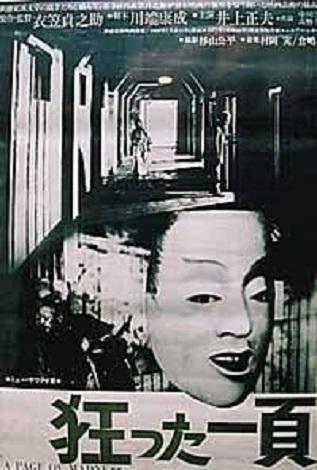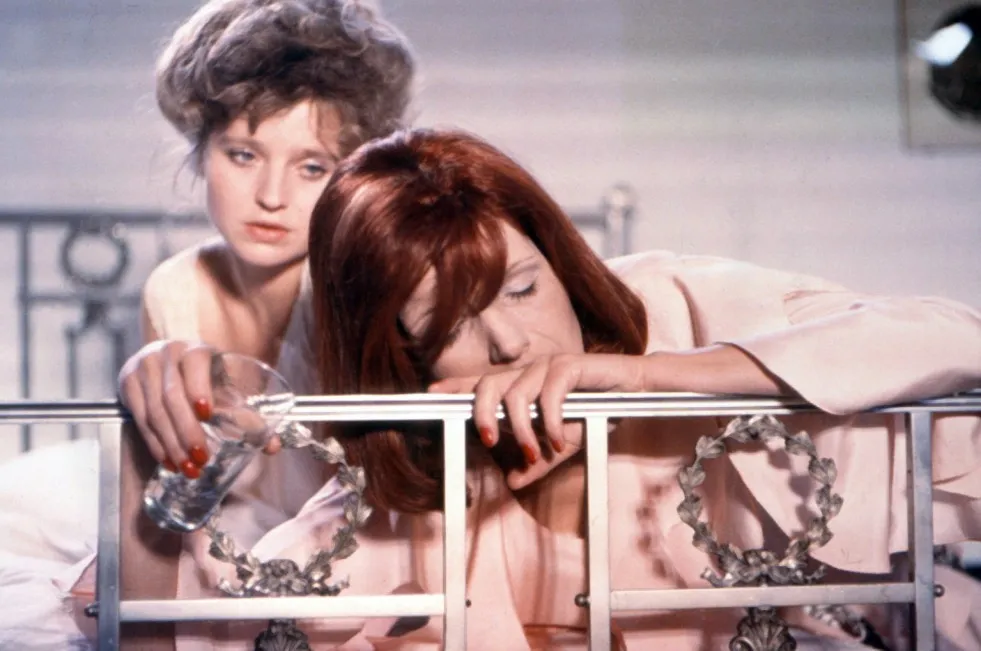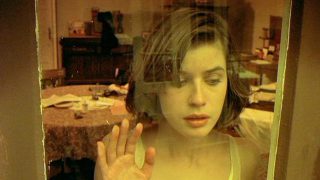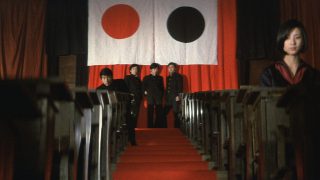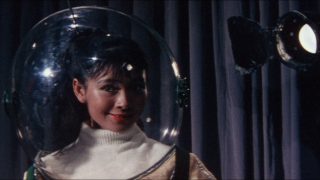Overview
“A Page of Madness” is a 1926 Japanese avant-garde silent film. Set in a mental hospital, it depicts the story of a family, interweaving reality and illusion.
It was directed by Teinosuke Kinugasa, and produced by Shinkankakuha Film Federation, which was a group formed by Kinugasa with novelists of Shinkankakuha (New Sensationalist School), such as Riichi Yokomitsu and Yasunari Kawabata.
Original story by Yasunari Kawabata. Screenplay by Teinosuke Kinugasa, Yasunari Kawabata, Banko Sawada, and Minoru Inuzuka.
Cinematography by Kôhei Sugiyama. Eiji Tsuburaya is credited as an assistant cameraman.
It was released in Japan in 1926 as a silent film without intertitles. 70 minutes.
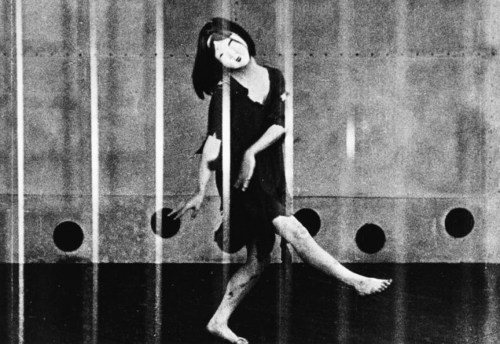
Plot
On a stormy night, it is raining hard and thunderbolts flash in the sky. A female dancer (Eiko Minami) wears a black dress and keeps on dancing like crazy in a room of a mental hospital. In her mind, she is dressed in beautiful outfits and is dancing to the music on the stage.
In the next room, a female patient (Yoshie Nakagawa) has a hallucination of a baby. A man (Masao Inoue) stares at her through the iron bars. He is her husband, but she cannot recognize him.
His wife had gone insane by being abused by him when he had been a sailor. Feeling guilty, he has worked as a janitor at the hospital to watch her.
The next day, the daughter (Ayako Iijima) of the man comes to the hospital to see her mother, and she is surprised to see her father working there because the man had sailed for a long time, leaving his family. She is about to marry a wealthy young man.
The janitor brings his daughter and his wife, but his wife cannot recognize her daughter. The janitor is afraid that his daughter’s marriage will break down due to his wife’s mental illness.
Being triggered by the dance of the female dancer, patients start going crazy. The janitor gets into a fight with a male patient, and he is sternly scolded by a doctor (Misao Seki).
It becomes increasingly difficult for the janitor to distinguish between illusion and reality.
The janitor wins a chest of drawers as the first prize in a lottery and he is overjoyed at getting his daughter’s bridal furniture, but that is revealed to be his dream.
The janitor tries to take his wife away from the hospital to hide her existence that prevents his daughter from marrying, but he is stopped by the doctor.
In his fantasy, the janitor beats the doctor to death with a mop, and he distributes Noh masks to the patients to bring smiles to their faces.
Commentary
“A Page of Madness” is the first full-scale avant-garde film in Japan, which was produced in the context of Taishō Modernism.
It was produced by the heavy use of then-innovative techniques, such as multiple exposure, flashbacks, and overlap.
It was influenced by German expressionist films, such as Robert Wiene’s “The Cabinet of Dr. Caligari” (1920), and F. W. Murnau’s “The Last Laugh” (1924). It brings a feeling of fear like a horror film.
It is surprising that such an elaborate and artistically accomplished silent film was produced in Japan at that time.
Though it was thought that the print of the film was destroyed in a fire that occurred in the film warehouse of Shochiku Shimogamo Studio in Kyoto in 1950, a print was found in the garden storeroom of Kinugasa’s house in 1971. The 59-minute re-edited version based on the print, called “new sound edition”, was screened in Japan in 1971, and in Europe and the U.S. in the early 1970s.
Some musicians, such as KK Null (Japan), In the Nursery (England), and Superchunk (the U.S.), have recorded their own soundtracks for the film.
In the 2010 Tokyo pre-event for “Art Cinema Festa 2010”, Japanese rock band Zunou Keisatsu performed live as a collaboration with “A Page of Madness” while it was screened, and they released the sound source as an album in 2012.
American film preservationist David Shepard produced the 71-minute digitally restored edition of the film scanned from a 16mm print in collaboration with home video and film distribution company Flicker Alley, and the restored edition was released on Blu-ray by Flicker Alley in 2018.
In “The New York Times”, film critic and journalist Ben Kenigsberg described the film as “a movie that pushes the expressive and experimental possibilities of silent filmmaking to their limits”.

